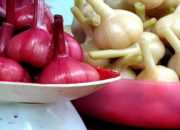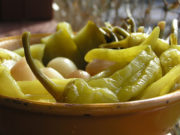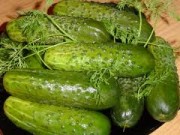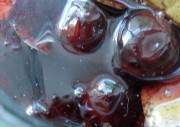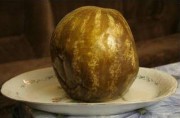Pickled green beans for the winter
Fans of green beans will be delighted with the new recipe for preparing green beans for the winter. This recipe is only suitable for young pods, at the so-called “milk maturity”. Pickled green beans are slightly different in taste from pickled beans, with a more delicate taste.
Green beans can be fermented for the winter, or eaten all summer long. After all, the pickling process is short-lived and takes 3-10 days, depending on the temperature of the room in which the beans will stand.
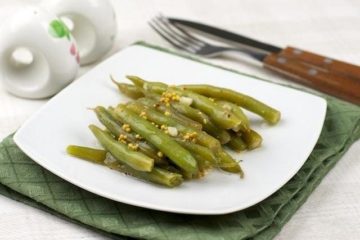
For sourdough, select young pods of green beans. Trim the ends at both ends and remove the hairy vein. This vein appears when the beans are already ripe and must be removed.
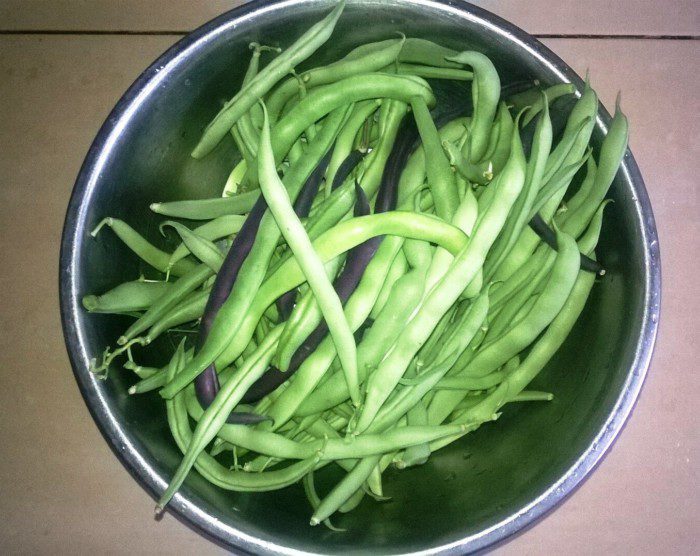
For 1 kg of green beans you need:
- 2 liters of water;
- 4 tbsp. l. salt;
- 5-6 cloves of garlic;
- Greens, peppercorns - to taste.
Before fermenting, green beans need to be blanched. Pour water into a large saucepan, add a little salt and bring to a boil.
When the water boils, pour all the beans into it at once. After boiling, blanch the green beans for 3-5 minutes.
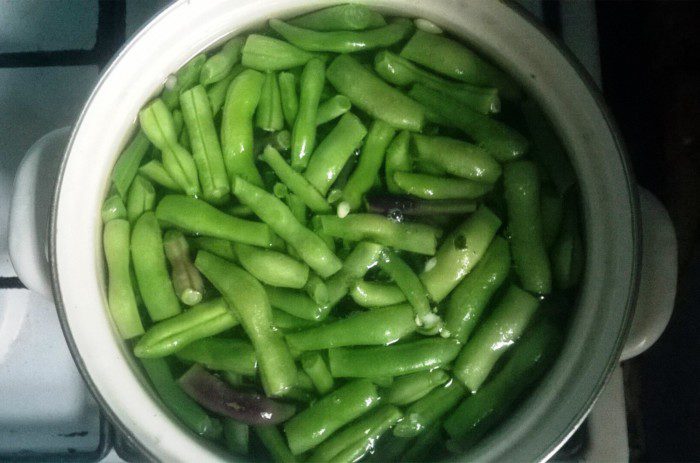
Drain and rinse the beans with cold water.
Place the green beans in a container in which they will ferment, mixed with herbs and garlic cloves, and start preparing the brine.
Pour 2 liters of water into the pan, add salt and peppercorns. Bring the brine to a boil and let it cook for 2-3 minutes.
Pour the hot brine over the green beans and press them down with a plate so that the beans do not float.
Now it’s just a matter of small things, you need to wait until the beans ferment. This is determined by the cloudiness of the brine and the whitish film of mold that appears on top.
As soon as the brine has become cloudy, the pickled green beans are ready and can be tasted.
For long-term storage, the beans are placed in jars, fresh brine is made according to the same recipe and poured into the jars. It is impossible to roll up such workpieces with iron lids.
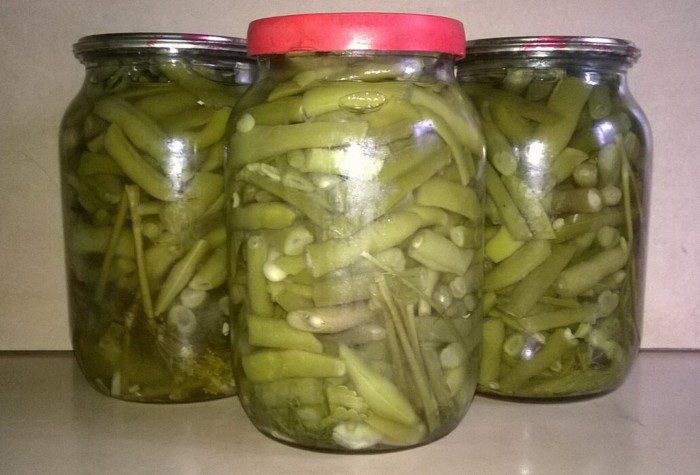
Find plastic lids, make several punctures in each of them with a sharp awl, and close the jars. Over time, the brine will become cloudy again, and a whitish film will appear on top. This is normal, but you should know that such preparations are stored in the refrigerator or in a cold cellar. At temperatures above +18 degrees, the fermentation process will turn into fermentation and the workpiece will be hopelessly damaged.
For another recipe for making sauerkraut beans for the winter, watch the video:



